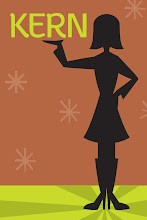
If you haven't read Part One, click here.
Licensing is not a hard field to break in to, though it does require patience and time. The first step is to determine which types of goods and merchandise on which you feel your art would work best. Does it lend itself to greeting cards, gift wrap/bags, notebooks, stickers, bedding, t-shirts, wall art, ceramics, etc. Go to the store, look around and search for things in which you can say, "My art would look great on something like that." Once you've found those items, take note of who manufactured the product. If you pick up similar items, you may notice overlap of manufacturers. The same manufacturer may create greeting cards, gift wrap and notebooks. Write this information down. Also take note of the styles of designs the manufacturers use.
The next step is to create your portfolio. You may have a great style but your work is not likely ready for submission. Look at the category in which you think you'll fit. What does the art look like? Look at your own work. Do you need to create patterns, scenes, more character driven art, etc. Best advice given to me is once I have a piece of art created, I should create at least 3 more pieces of art to go with it using the same or similar elements and color. Create a series using your original art as the basis. Personally, I create one scene and, at minimum, three patterns to go with the scene, often picking up elements directly. Sometimes I add in a cup, plate and napkin for art I think would work well on paper party goods.
In terms of stationery, think about the categories as well. You have Birthday, Holiday (general referred to as Christmas/Winter), Other Holiday (the rest of them - Easter, Valentine's Day, St. Patty's Day, Memorial Day, etc.) and Everyday (Wedding, Baby, Congrats, etc.). Does your art fulfill these needs? What can you do to have a good range? You may have new art to create to have a varied portfolio but just remember to stay true to your style. You may not have a style that's good for wedding. That's ok, just beef up another category instead.
Stay tuned for Part Three - I have a portfolio, now what?







